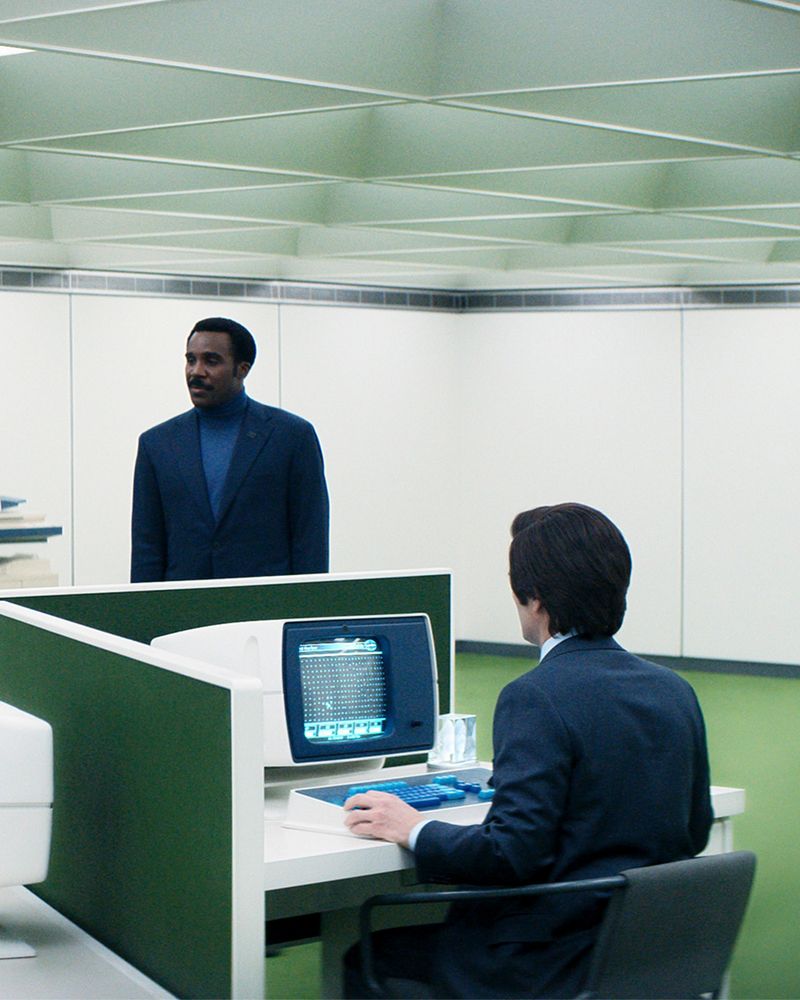THE JOURNAL

Britt Lower, Zach Cherry, Tramell Tillman and Adam Scott in “Severance”. Photograph courtesy of Apple TV+
This month, the freedom of summer fades aways, holidays dissipate and return-to-office mandates proliferate. The struggle of work-life separation is familiar to many of us – and has even made it onto our screens. In Apple TV+’s smash-hit Severance, workers at Lumon Industries are mandated to do just one thing before going to work each day: leave themselves at home. A savage twist on work-life balance, the show sees employees undergo a surgical procedure to sever their work consciousness from their outside selves.
It’s a sci-fi dystopia that may also feel a little close to home. While going back to the office after a lengthy spell of WFH is not quite as brutal as having an “innie” and an “outie” – the cutesy monikers for employees’ work and home selves in the show – this real-world shift can present personal and professional challenges.
“While some are excited to return, many find it a huge inconvenience,” says workplace therapist Joyce Marter. “It’s important to understand that this is a layered transition that is both logistical and emotional and that different people have different circumstances that impact their perspective on the transition back to the office.”
Below, we talked to some experts in workplace psychology about harnessing the office space to make the new reality of Return To Office work for you.
01. Talk about it
It’s completely valid to feel some trepidation about RTO. The chances are everyone around you will be in a similar place. “If you’re experiencing anxiety or resentment, you are not alone,” Marter says. “Understand that those above you may be facing challenges, too. Seek to understand why the decision’s been made.”
02. Get an agreement in place
This two-way dialogue is the way forward, advises Karen Mangia, a future-of-work strategist. “Managers aren’t mind readers, and many are navigating the same ambiguity,” she says. “A practical step is to co-create a team agreement: what are our shared goals for being in person? How do we define ‘productive’ time together? What’s working, and what’s not?”
03. Change the narrative
A mindset shift, albeit not as drastic as that in Severance, may be useful for the real-world workplace. “Stop thinking about RTO as a mandate and instead, consider it an invitation,” Mangia says. “Ask yourself: how can I use this time to strengthen relationships, gain visibility, or make my voice heard in new ways? When employees see RTO as a tool rather than a test, they reclaim some agency in the process.”
04. Do the deep work (where it makes sense)
RTO is an opportunity to re-examine your working week. Cal Newport, the author of Deep Work, has done the work on what kind of labour is best served where, separating tasks into deep, cognitively demanding work and shallower items on the to-do list, such as email and admin. Planning your week as far as possible in this way will help you efficiently deal with that to-do list.
05. Make it worth the commute
This also could mean prioritising activities that would benefit from face-to-face interaction when in the workplace, such as brainstorming, mentoring or coffee with a colleague. “For your sanity’s sake, you don’t want to go to an office just to email or call people,” says time management expert Laura Vanderkam. “You could do that from home.”
06. Look for support
The office also offers something Slack could never: solidarity. “Turn to your coworkers for normalisation, validation and creative brainstorming about how you can all help one another during this process,” says Marter. “Just knowing others are experiencing the same thing can be comforting and empowering.”
07. Boss it
If you manage people, the best thing you can offer staff is clarity, Mangia says. “Managers must go beyond saying what they expect and instead explain why it matters. Clear expectations, transparent decision-making, and regular check-ins build trust and help people re-engage with purpose.”
08. Renegotiate home time
If being in the office means you’re less available for dishwasher duties, you’ll also benefit from clarity around household responsibilities. Schedule time for a conversation about what RTO means for you and those you live with. Missing getting life admin done during WFH days? Vanderkam, who hosts the Best Of Both Worlds podcast, advises prioritising time during office breaks to get what you can done. The life admin that you can’t do in the office, you should consider taking time off to complete. “This is what personal days are for,” she says. “If you get them, take them.”
09. Bring boundaries to work with you
WFH may have taught you great life lessons: how to spend more time with the people you love; the value of being able to get up and stretch every 45 minutes; when to switch off. The key is to take these lessons forward to the workplace, Marter says. “Schedule short breaks into your calendar. Say no to non-essential meetings or after-hours emails. Protect your evenings and weekends.”
10. Get closure
Whether you strictly enforced boundaries during WFH or found that the experience left you replying to emails at all hours, RTO can offer the potential to reflect and reset for the better.
Struggling to switch between your “innie” and “outie” selves? Marter suggests a closure ritual as simple as shutting your laptop and tidying your desk. “Playing a favourite song on your commute home can signal that work is done,” she says. “Small practices, done consistently, make a huge difference in sustaining your energy, mental clarity and productivity.”
